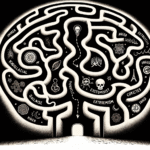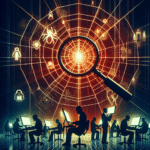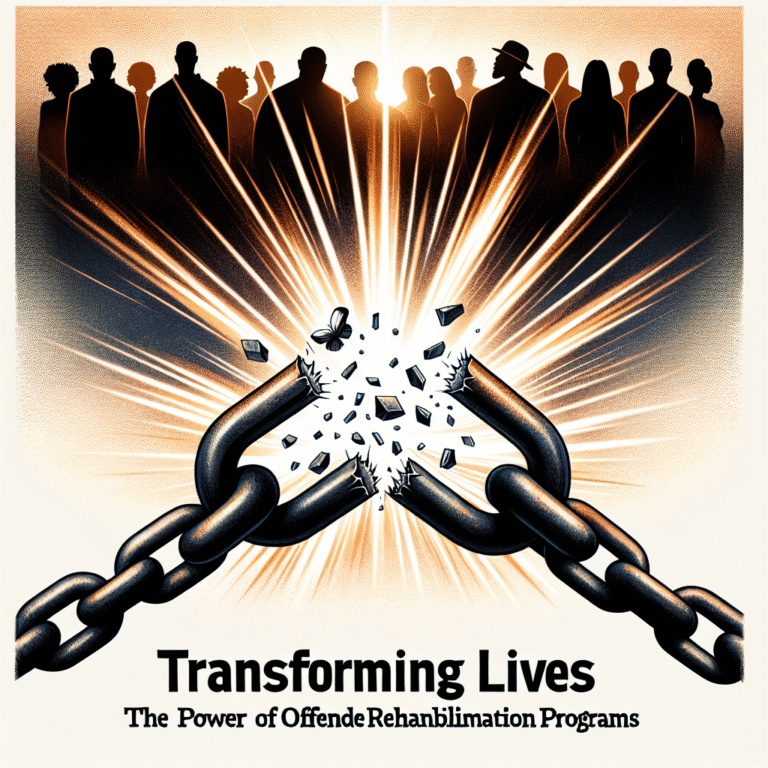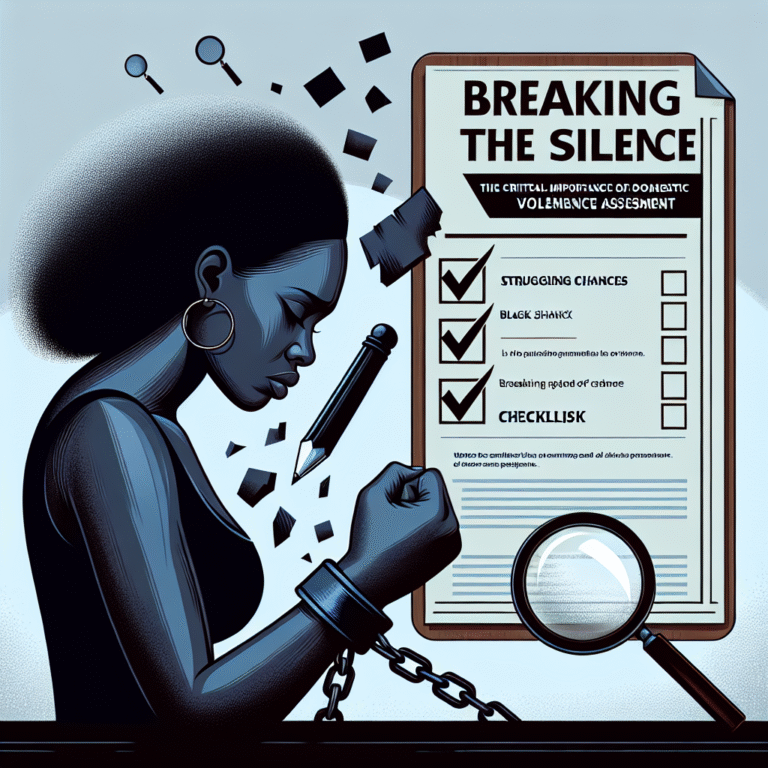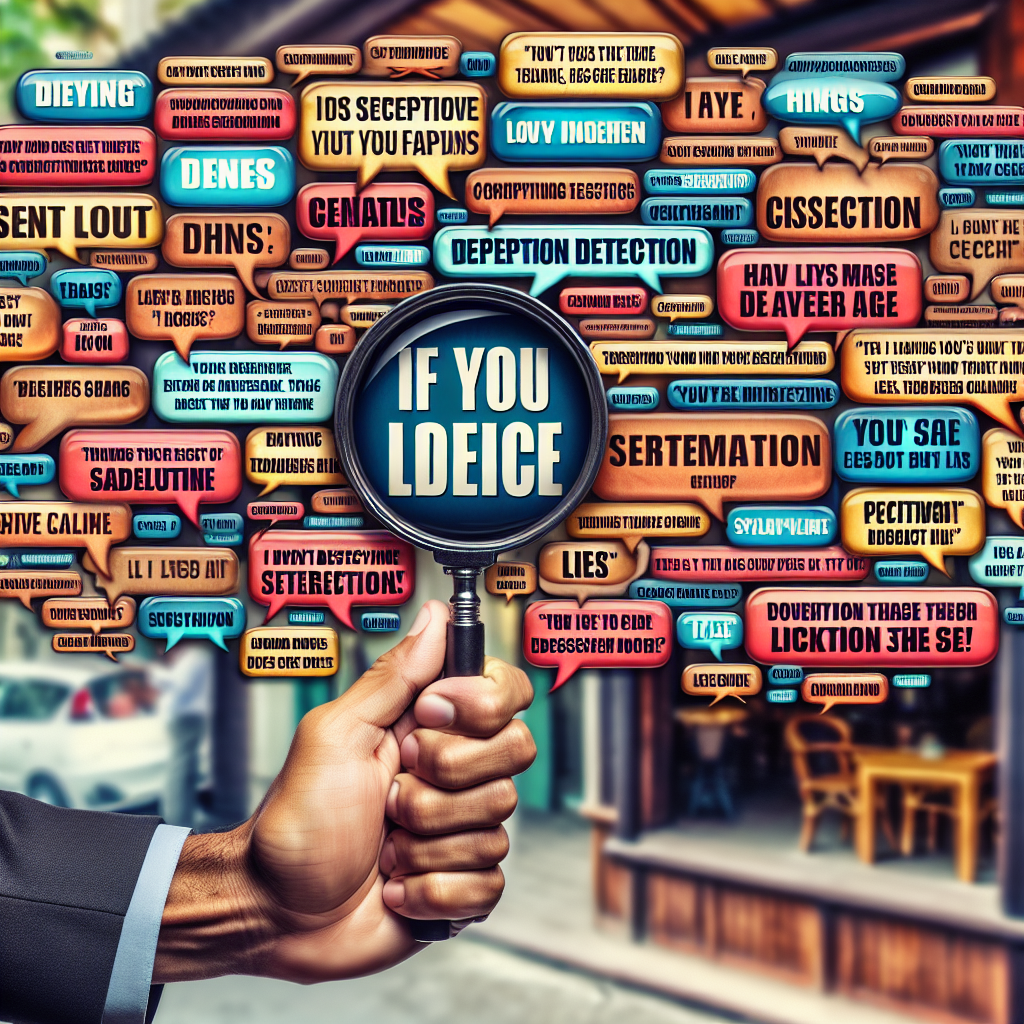
Introduction
In an age where the lines between truth and falsehood blur more than ever, mastering the art of deception detection isn’t just useful; it’s essential. From casual conversations to negotiations, detecting deception can save you time, money, and emotional turmoil. With the rise of social media and digital communication, the ability to read between the lines is increasingly critical. Welcome to "Deception Detection in Everyday Life: Tips for the Savvy Observer," where we’ll equip you with tools, techniques, and insights to sharpen your observational skills. Let’s dive into this fascinating world where understanding human behavior becomes your ultimate superpower.
The Importance of Deception Detection
Understanding deception is not merely the pursuit of conspiracy theorists or detectives; it impacts our daily interactions. Whether you’re navigating personal relationships or professional collaborations, the ability to discern sincerity from insincerity can alter the course of your decisions. In fact, a study by the American Psychological Association found that people can detect lies only about 54% of the time—barely better than chance.
Case Study: The Spouses’ Truth
In a fascinating case study, a couple attended therapy due to frequent disagreements and trust issues. Throughout the sessions, the therapist noticed subtle cues that suggested one spouse was hiding financial problems. By guiding the couple through open communication, the therapist managed to help them address these issues directly. This case illustrates that deception detection in everyday life can pave the way for healthier relationships by fostering transparency.
Recognizing Nonverbal Cues
Nonverbal communication accounts for a significant portion of human interaction. Understanding the nuances of body language can enhance your deception detection in everyday life.
Key Nonverbal Signals
| Signal | Possible Meaning |
|---|---|
| Avoiding Eye Contact | May signify discomfort or lying |
| Excessive Fidgeting | Often an indicator of anxiety |
| Mirroring Your Body Language | May suggest comfort and honesty |
| Inconsistent Facial Expressions | Can indicate deceit |
Case Study: The Job Interview
In a high-stakes job interview, an applicant’s nervousness was apparent through excessive fidgeting and a lack of eye contact. While the candidate had impressive credentials, the interviewer noted these nonverbal cues. In subsequent interactions, the applicant was encouraged to practice eye contact and relaxed posture. This scenario identifies how nonverbal behavior can alter perceptions, underscoring the importance of being aware of these signals in deception detection.
Listening Skills: The Key to Verbal Deception Detection
Verbal communication is just as telling as body language. Paying attention to tone, pacing, and content will elevate your skills significantly.
Key Aspects of Verbal Communication
- Inconsistencies: Listen for contradictions in their story.
- Overly Vague Answers: These can indicate a desire to obscure the truth.
- Defensive Tone: An aggressive or overly defensive response may suggest guilt or deception.
Case Study: Sales Pitch Gone Wrong
A salesperson attempted to sell a product by glossing over its drawbacks. As experienced buyers, the clients noticed inconsistencies in presentation and responses. By asking pointed questions, they dug deeper, revealing that the product did not meet their needs as originally suggested. This highlights that verbal dishonesty can often be uncovered through active listening—a vital aspect of deception detection in everyday life.
Psychological Principles Behind Deception
Understanding the psychological aspects of deception can provide further context in your observations.
Fundamental Attribution Error
This principle suggests that people tend to attribute someone’s behavior to their personality rather than to external circumstances. This can lead us to misinterpret truthful interactions as deceitful.
Cognitive Load Theory
When lying, individuals are often under more mental strain, which can be observed through behavior changes—like inconsistent narratives or nervous habits. Recognizing these signs is crucial for effective deception detection.
Case Study: The Stranger’s Lie
In an airport, a traveler noticed their companion exhibiting potential deceptive behavior when discussing their job. Applying cognitive load theory, the observer deduced that the individual was fabricating their story under the stress of casual conversation and a significant time constraint. This situational awareness promotes the core tenet of our discussion: a savvy observer’s approach.
Creating a Deception Detection Toolkit
Equipping yourself with practical tools enhances your discernment abilities.
Essential Tools for Savvy Observers
- Active Listening: Engage fully in conversations to catch verbal inconsistencies.
- Empathy: Consider others’ perspectives to better understand their motives.
- Observation: Be aware of body language and facial expressions.
Case Study: The Nonverbal Signal Detector
A business leader implemented a company culture that promoted open communication. One day, during a team meeting, they noticed a team member’s discomfort when discussing project performance. By creating a safe space for dialogue, they uncovered deeper issues that led to more productive solutions. This supports how cultivating observational skills can yield significant benefits in teamwork and collaboration.
Ethical Considerations in Deception Detection
While it’s crucial to develop detection skills, it’s equally important to use these tools ethically.
Understanding Intent
Everyone has motives for their actions, and sometimes those motives are rooted in good intentions. Misjudging someone can lead to unnecessary conflict. Always remain curious rather than judgmental.
Case Study: Misreading a Friend
Consider a scenario where a friend seems evasive regarding a personal issue. By assuming they are being deceitful without understanding the context, you may inadvertently harm the relationship. Instead, a more empathetic approach can lead to support and understanding. This reiterates that our aim in deception detection should be truth-seeking and not conflict-generating.
Summary of Keys to Deception Detection
In summary, mastering deception detection in everyday life requires an amalgamation of observation, empathy, and ethical considerations. Here’s a quick recap of what we’ve explored:
- Nonverbal Cues: Recognizing body language helps in understanding underlying emotions.
- Active Listening: Pay attention to tone, pacing, and inconsistencies in verbal communication.
- Psychological Principles: Familiarize yourself with theories that explain why people lie.
- Ethics: Use your skills responsibly, focusing on understanding rather than judgment.
Conclusion
Deception detection in everyday life is a multifaceted skill that encompasses active listening, keen observation, and a healthy dose of empathy. As a savvy observer, you’re not just looking for lies; you’re piecing together the story behind the behavior. So the next time you’re faced with uncertainty, remember the tools at your disposal. Mastering these techniques will not only help you avoid being misled but will also enhance your relationships and professional interactions.
Embrace your newfound insight, and empower yourself to navigate the complexities of human communication with confidence.
FAQs
1. What are the most common signs of deception?
Common signs of deception include inconsistency in stories, avoidance of eye contact, excessive fidgeting, and an overly defensive tone.
2. How reliable are nonverbal cues in deception detection?
While nonverbal cues can indicate discomfort or dishonesty, they should not be taken as definitive proof of lying. Context is essential.
3. Can deception detection be learned?
Yes! Through practice and observation, anyone can develop skills in identifying deceit and understanding human behavior.
4. What should I do if I suspect someone is deceiving me?
Approach the matter delicately. Consider asking open-ended questions to encourage honesty and creating a non-confrontational environment for discussion.
5. What are ethical considerations in deception detection?
It’s vital to consider the intent and context behind behaviors. Use your skills to foster understanding rather than create conflict.
By following these guidelines and tips for deception detection in everyday life, you can harness your ability to observe, interpret, and respond thoughtfully to those around you.
For further consideration, think about how you might apply these insights in your daily life. Whether engaging in conversations, negotiating a deal, or simply trying to understand those around you better, your enhanced observational skills will serve you well. Remember: the truth is out there; it just often requires the right lens through which to see it!
